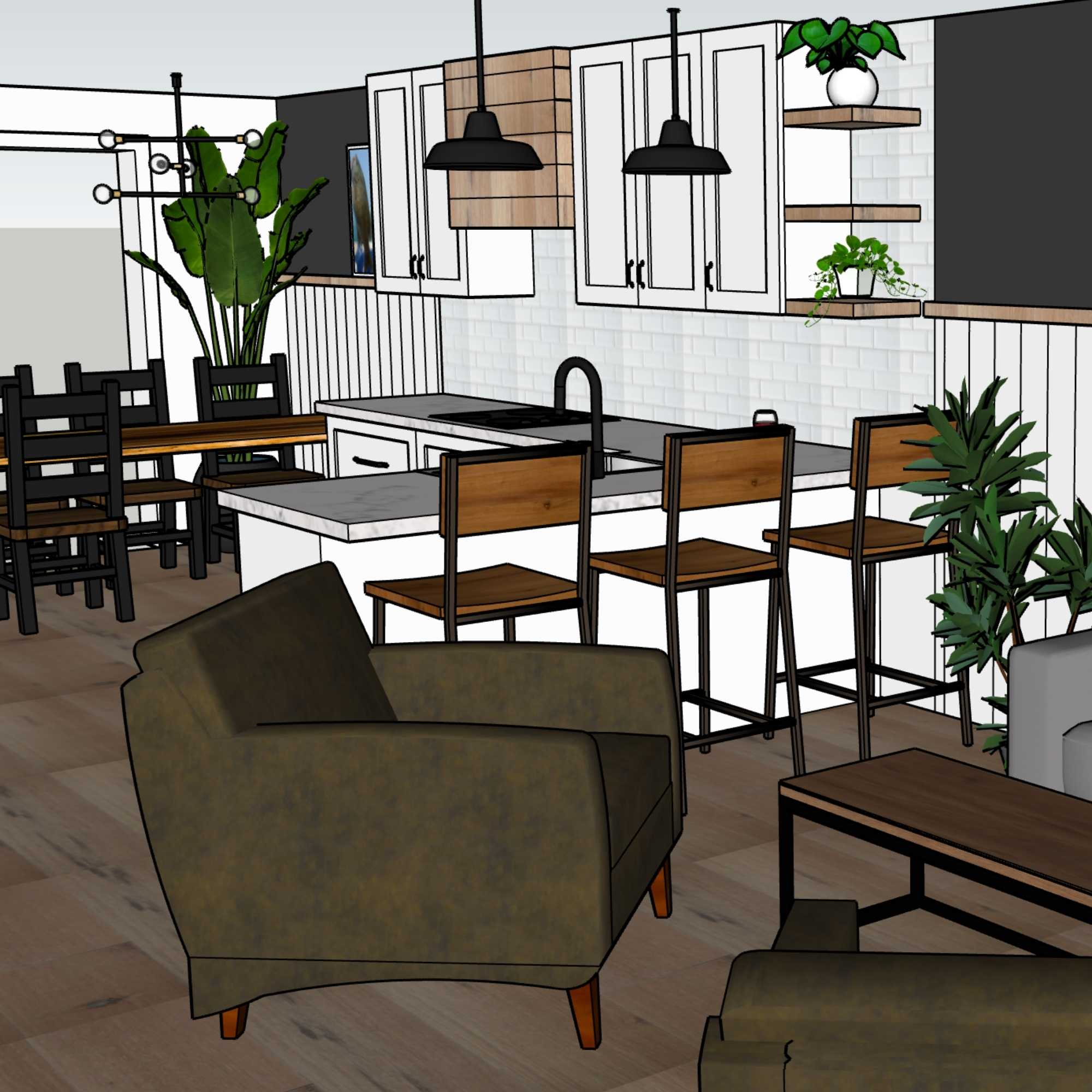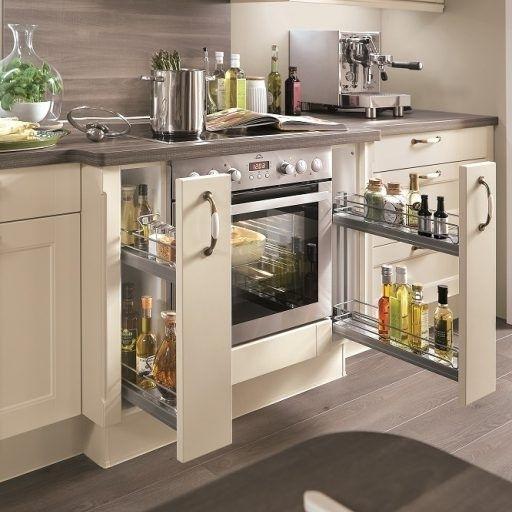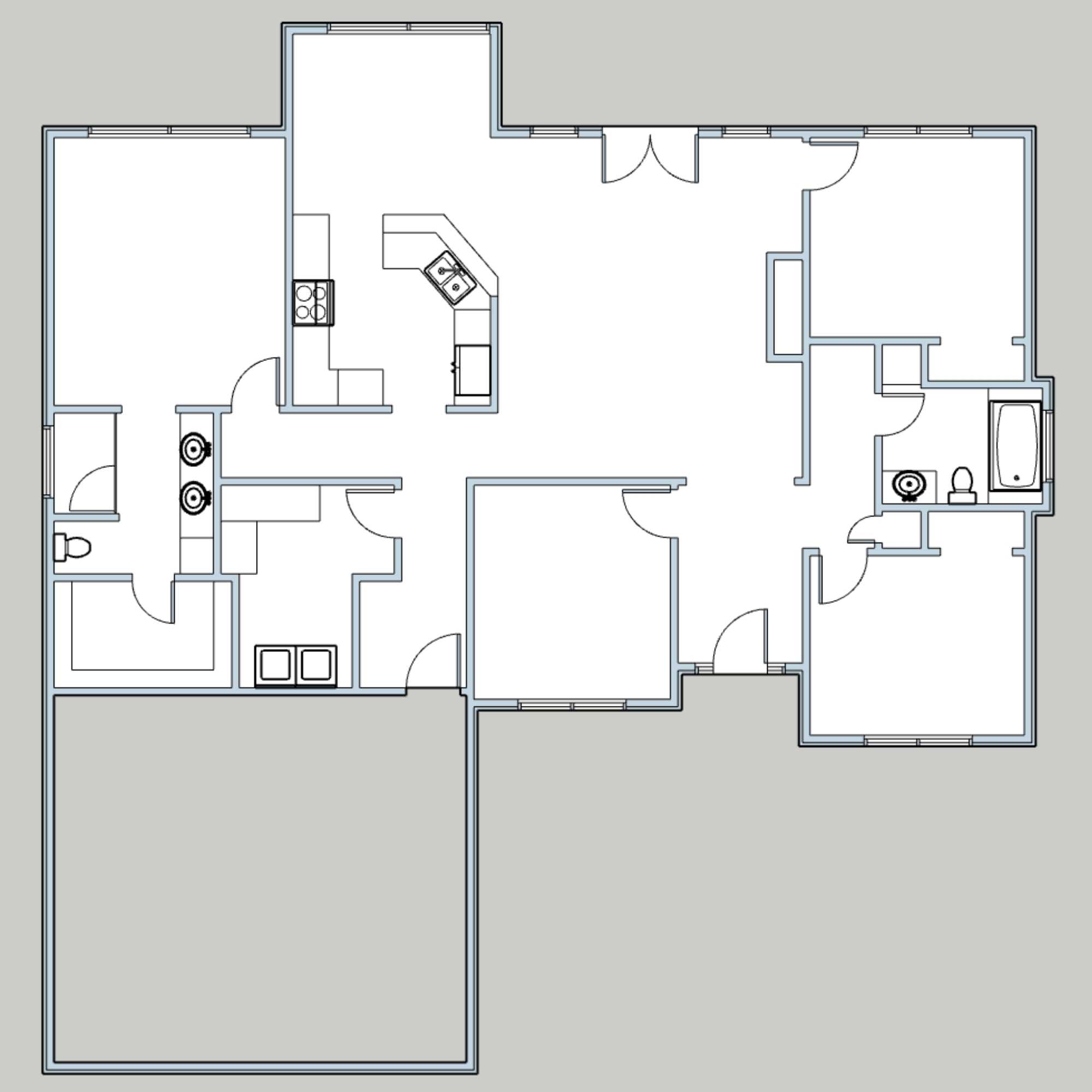
What is a Pot Filler?
A pot filler is a single-temperature faucet with a foldable swing arm that is placed on the wall above a stove top. As the name suggests, their primary purpose is to fill up large pots directly on the stove so that you don't have to carry heavy water-filled pots from the sink, which could be far away.
Sounds logical, right?
Sure, it would be nice to have this benefit. But is it worth the outlay of cash to buy the faucet itself and install the new plumbing? I am assuming that you're already renovating your entire kitchen anyway, and that this is just one part, so that we don't have to include a new backsplash as part of this particular project's budget.
Since Pot fillers seem to be all the rage these days, let's explore the reasons why people think they are essential.
Reasons to Have a Pot Filler
Let's start with the potential uses and positive reasons why someone might want a pot filler. I was originally in this camp too, so the reasons are not insignificant.
You don't have to carry a full pot of water from the sink over to the stove
I don't need to add much context to this one because the main promise of the pot filler is baked right into its name. The pot filler's main function is to fill pots directly on the stove instead of carrying a heavy pot over to the stove.
And I don't need to remind you that you do need to carry that same full pot back to the sink to dump out said water, no matter where it was sourced. So if you're able to carry it back, why not just save the cash and carry the pots over too?
Sure, if you had a physical limitation of some form, and couldn't carry a full pot over to the stove, then at least being able to lift an empty pot and fill it up right there might allow you to at least cook your food, even if you had to wait for someone to come and dump it out for you. I suppose there is a very tiny fraction of the population that might need it for this reason, but many more people have pot fillers than those that need it in that way.
You can easily top up the stock pot
I think that the original purpose of the pot filler was to continually add small amounts of water to a large stock pot as it simmers for 24-48 hours. Rather than just fill a smaller cup or jug and bring it over to top up the pot, someone probably thought it would be a great idea to just put a tap right over the pot and add it directly.
I actually love it for this purpose, because you could just top up little amounts as you go and it would be fun to just turn on the tap that's right there above your simmering pot. But given the fact that we only make a big batch of chicken noodle soup every 1-2 months, it would hardly be worth it for those 6-8 times a year. And it's almost no effort at all to just fill up a glass of water and carry it the 3 steps to the stove and pour it into the pot. But maybe one day when my career as a soup cook takes off...🤔
They can be a gorgeous kitchen feature
Depending on your design style and personal preferences, a pot filler can be a beautiful addition to your range wall. The extra detail provides visual interest, an air of luxury, and a nice break in an otherwise simple backsplash.
There you have it…3 mediocre points in support of the over-valued pot filler. So now, let's see what happens if we put the beautiful images and Pinterest pressure aside, and apply some practical, life-experience logic to the decision-making.
Reasons Why a Pot Filler Will Be the Biggest Waste of Money in Your Kitchen Renovation
OK, yes I'm a bit biased. 😉
They aren't height-adjustable
Since the purpose of the device is to avoid carrying a big pot of water to the stove top, the pot filler must, logically, be placed fairly high above the stove top so that the large, heavy pots can fit underneath. This means that the regularly-used small pots will be really far away from the spout if they are just sitting on the stove.
The result? You'll either deal with it being super splashy (I guess most people are ok with this, since it's just water...?) OR you will opt to hold your small pot up so that it's closer to the pot filler. And then I have to ask...why are you bothering? If it's the exact same process to hold your small pot up to the pot filler as it is to the regular faucet over the sink, why not just do the faucet? That way, if you overfill the pot and need to dump a bit out, you're already standing over the sink.
It's inconvenient to flush the pipes before you use the water
Maybe I'm the only person who does this, but when I turn on a tap I haven't used in a while (12 hours or so), I always run the water for a few seconds before I use it for drinking or cooking. I live in an older part of Toronto, so I am never 100% positive that all the lead pipes have been removed from our water supply system. I am very confident in our water in this city, and nobody here has health issues as a result of the water (that I know of), but I cannot help but run the tap for a minute or so first thing in the morning after it's been sitting still in the pipes overnight just to flush things out.
Maybe I'm wrong to do that, but the water that comes out after 30ish seconds is just colder and fresher, and I like that. So if I had a pot filler, I would probably never just start filling a pot directly without first running that water for at least a few seconds. So I'd have to fill a pot, carry it over to the sink, dump it out, only to bring it back to the stove to start filling it for my cooking purpose. Seems like the exact same amount of effort and walking (or maybe even more) as if I just filled it directly from the sink the first time.
They are a safety hazard
Depending on the model you get, this may not be applicable—but all the ones I've ever seen have the actual water shutoff handle at the base of the filler, right against the wall (not at the end of the spout like you'd expect—that one is just for controlling the stream of water).
So this means that every time you need to turn the water on or off, you actually need to reach across your hot burners. Why does anyone think this is more convenient or safer than just carrying a bit of water from your sink to your stove top? I would never encourage my kids to use the pot filler for this reason, which means I would only ever demonstrate pot filling with the sink faucet, so that they wouldn't feel the need to copy me doing the thing I want them to not do. (Yes my kids are little...and copy-cat sponges, who, at 2 and 5, are experts at everything in the world and need to do everything themselves).
It's not practical with some building codes
Here in Canada, where we regularly have sub-zero temperatures for 4 months of the year, our building code says that plumbing pipes cannot be in exterior walls, because that space needs to be dedicated to insulation. Therefore, since most stove tops are on exterior walls (ideal for direct venting the exhaust hoods), there is no good solution for implementing a pot filler. You could fur out the walls to allow more space for the pipes, but that means you're losing those several inches across the entire wall. If you don't do the entire wall, it might look funny or make your oven stick out further.
There's no drainage for drips or leaks
I've saved this one for last because I think it's the most important one. It's never a good idea to provide a water source without a drain. End of story.
Leaks are real, and they happen to the best of us. And since water is the most damaging thing (ok apart from fire and extreme storms) that you can let loose on a home, it's simply not logical to take a risk like this with your plumbing. It takes very little for an o-ring to break, especially when the faucet doesn't get constant use, so the odds are greater that a pot filler will leak, when compared to a standard sink faucet. And you know that it will start leaking the minute you go to bed or leave for work, so that you can find a growing puddle (or worse) inside your stove top or even down to the floor when you arrive back at your kitchen. Why take that risk? Are the benefits so great?
Where else could you spend the same money and get more value?
So there you have it. The complete list of reasons why you really don't need to install a pot filler in your new kitchen. The cons definitely outweigh the pros, which makes it a tough addition to justify.
Even though the cost of a pot filler itself (about $150?) is negligible in the grand scheme of large renovations or new builds, the plumbing and installation of the device will definitely add a bit of cost to the project. So if we make an easy rounding decision and assume that buying and installing a pot filler costs $500, then I bet I could come up with a few alternative places you could spend those dollars to offer you much more utility and value.
- Upgrade your pots and pans. If you love to cook, but you don't have amazing cookware or utensils, spending $500 would go a long way to getting you better quality stuff. Better cookware actually does make a difference to your finished products, and will noticeably improve your life on a daily basis.
- Get an under-the-counter beverage fridge. Finding one for $500 will admittedly be tricky, but they do exist, and boy will it change your life! If you like to drink beer, wine, soda, juice, or anything else, but feel frustrated that your main fridge is always full of drinks, then having a second fridge dedicated just to beverages will be a game changer.
- Spend more on a quality vent hood. The biggest problem with most exhaust vents is that they are so noisy. Allocating a higher budget for a higher quality exhaust will increase your likelihood of being able to afford one that's incredibly quiet. And if you do a lot of cooking and entertaining in your kitchen, this is a great investment.
- Increase/improve your lighting. Kitchens need the most task lighting of anywhere in the home, so spending an extra $500 to have extra LEDs under your upper cabinets, or a sconce above the sink, or just better quality recessed lighting will make a huge difference to the functionality of your home and how much you enjoy cooking in it.
YOUR KEY TAKEAWAY THOUGHT
Just seeing pretty pictures of something on Instagram doesn't make it a good idea.
Take control of your renovation by planning it yourself and owning each decision. Carefully consider whether ideas suggested by other people are right for you, and don't give in to pressure just because something looks pretty. Functionality and usability should always be your top priority!










 How to Beat Overwhelm with Your Home Renovation
How to Beat Overwhelm with Your Home Renovation The Important Documentation You Need to Guarantee a Successful Renovation
The Important Documentation You Need to Guarantee a Successful Renovation